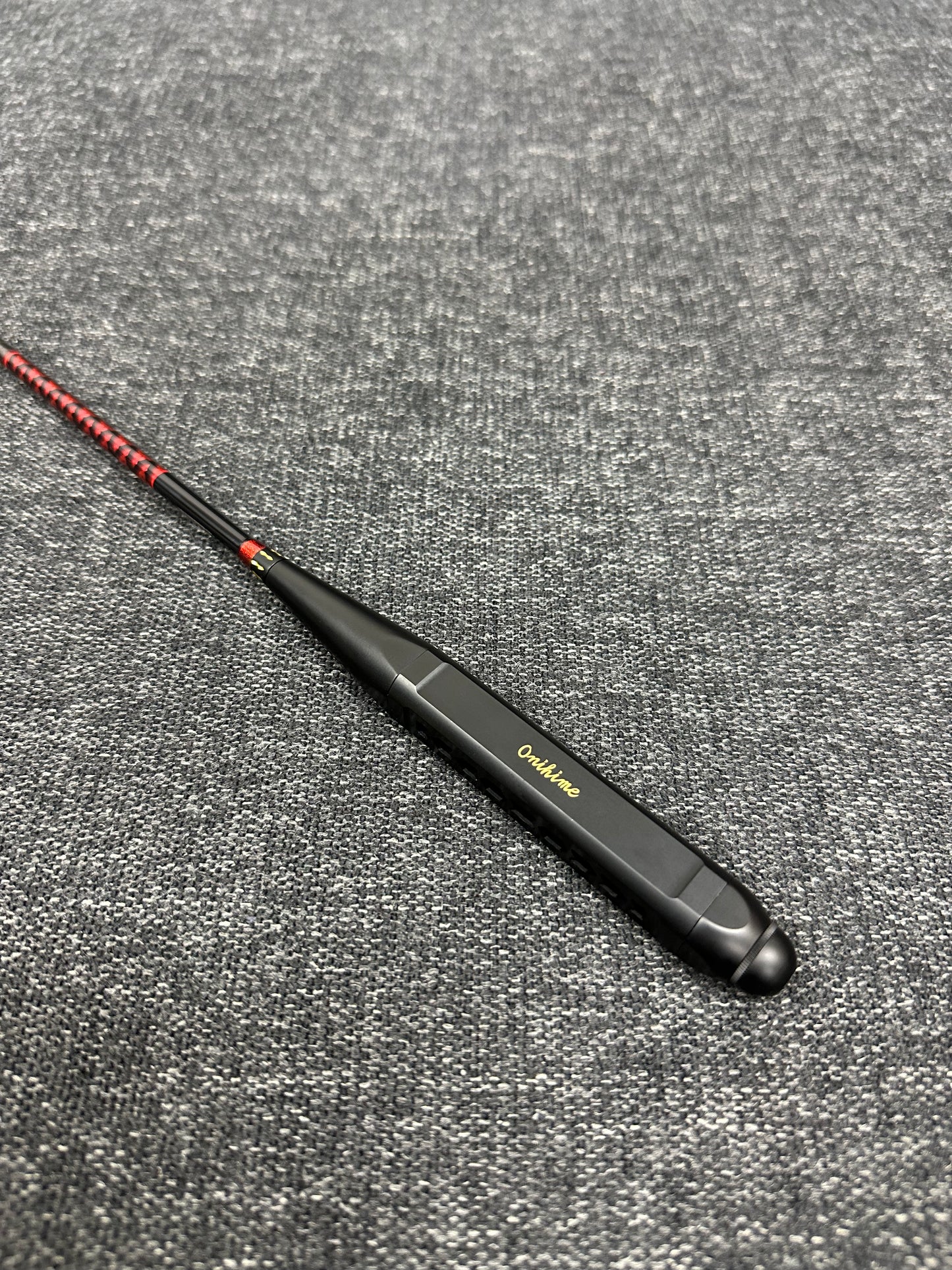Onihime
ONIHIME Cloaca 160cm (1 piece)
ONIHIME Cloaca 160cm (1 piece)
Couldn't load pickup availability
Feel the shrimp bite with your hand and catch the Onihime in the hooking zone. A professional model suitable for shrimp fishing tournaments in Thailand.
The current high-end fishing rods in Thailand are designed to be flexible throughout, and the mainstream method is to bend the rod when the float sinks and the shrimp is touching the bait, and then check whether the shrimp is on the hook. Under the rules in Thailand, where only one hook can be used (Taiwan and Vietnam allow two hooks), this is a very reasonable method, and many professional anglers use this method to hook the shrimp with the tip of the hook hooked on it. is.
However, when actually fishing in this form, the fishing rod is generally soft, so the hook has a disadvantage of being difficult to catch in the hard shrimp's mouth. Also, although it is interesting to pull it hard after catching a shrimp, there is a risk that the person next to you will get hooked when the fishing spot is crowded.
So, is it okay to have a hard tip to prevent the shrimp from coming off when hooked? We tried using a stiff rod, but found that the stiffness of the rod brought out its greatest disadvantage, as the hook bounced out of the shrimp's mouth, making it harder to catch fish than we had imagined.
Therefore, the ONIHIME Cloaca 160 adopts a method of separating the roles of sensing the bite from the role of hooking.
Simply put, it was designed to detect the bite and to let you know which part of the shrimp the hook is touching in the water. This is due to the conductive design that transmits the signal from the rotating top to the sensitivity of the carbon and the aluminum grip in your hand.
Even with conventional shrimp fishing rods, there were models that made it easy to sense the bite to a certain extent, but the main reason for not catching shrimp was that the hooking zone did not match.
Shrimp fishing rods are mostly four-piece rods. They are counted from the tip as #1, #2, #3 and #4. Today's high-end fishing rods for sea bream are #3 or #4, which are the closest to #4 when the hook actually exerts force on the tip after hooking.
There is a big time lag between hooking the fish and it actually getting hooked, so the hook falls off.
Therefore, we created ONIHIME's own hooking zone for the ONIHIME Cloaca 160. Specifically, #1 detects the shrimp's bite, and #2 hooks the hook. #3 acts as a cushion to prevent the shrimp from coming off, and #4 distributes the force. This is the idea behind creating a role for each carbon blank.
Recommended fishing spots: Chiang Mai and Bangkok
The 160cm model is small, so it matches the small stores in Chiang Mai. In Bangkok, it is mainly used when searching in front. Even in Bangkok, you can often see experts searching in front and behind at the same time with just one 160cm model.


